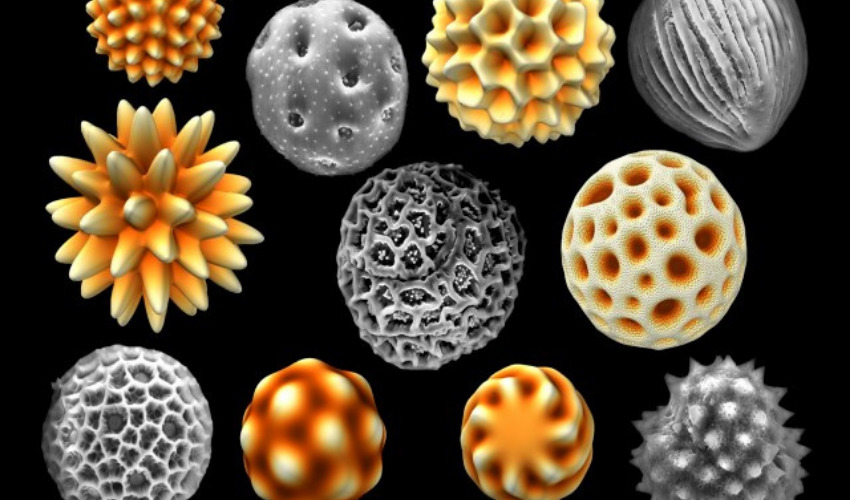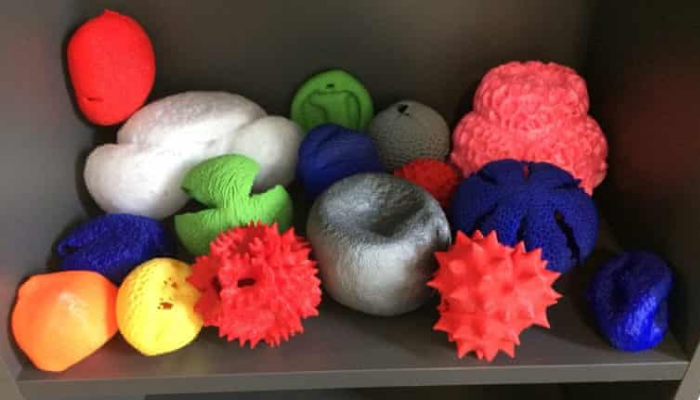Project uses 3D printing to supersize and study pollen

In fields as far-ranging as medical and aerospace engineering, 3D printing has applications that can help students and professionals understand complicated concepts. For example, in the medical sector, exact anatomical models of patients’ organs are 3D printed to plan and rehearse for surgery, providing better treatment pathways. It turns out, 3D printing can also help look at objects that might usually be too small for the naked eye and help researchers not only to present their designs but to also examine these microscopic objects. Such was the idea behind the 3D Pollen Project, which is using 3D printing to help students and researchers to better see pollen grains. Though many of us think of pollen as the invisible enemy, these microscopic grains could provide a holy grail of information for researchers and students alike.
The brainchild of Oliver Wilson, a PhD student at the University of Reading, the 3D Pollen Project was launched as a way to process and scan accurate, printable models of pollen grains to put in an online database. To accomplish this, Wilson’s team uses laser scanning confocal microscopy, a process which is used to obtain high resolution optical images and which is compatible with 3D printing. These scans are then put online, for free, thanks to funding from I’m A Scientist and the University of Reading. The aim is that “they will be of use and interest to scientists, communicators, teachers and the wider public, for outreach, education and research.” Additionally, though the team does not have the capabilities to print the pollen grains themselves, if provided with a sample of pollen, they can scan it and send them it directly to interested parties. As of now, 30 models of different pollen grains are already scanned and available online for download and Wilson plans to scan even more.

Different pollen grains in their microscopic form (photo credits: Dartmouth College Electron Microscope Facility)
According to the 3D Pollen website, the study of pollen has many different applications in a variety of scientific fields. Due to their durability and distinctive characteristics, they can be used to study effects of climate change, the quality of honey, forensic analysis and even medicine and vaccines. However, due to their size, pollen grains are not just difficult to study but also to showcase. The use of microscopes can be limiting due to the interpretation of the 3D pollen into a 2D image, not allowing for depth or a full view. With these downloadable scans, the pollen can be magnified when printed and then seen from all angles. 3D printing pollen grains will then allow for greater ease in teaching and presenting research.
Improving Education and Research with 3D Printing
This is not the first time we have seen the use of 3D printing in research and teaching, especially in scientific fields. 3D printing is increasingly being used in schools not only as a way to teach important skills to students of all ages but also to help visualize complicated concepts. In medicine, researchers recently produced a human heart model to help surgeons to plan their operations. You can find more information on the 3D Pollen Project from their website!

A selection of 3D pollen models (photo credits: 3D Pollen Project)
What do you think about the 3D Pollen Project? Are you interested in attempting to 3D print a grain of pollen? Let us know in a comment below or on our Facebook and Twitter page! Don’t forget to sign up for our free weekly Newsletter, with all the latest news in 3D printing delivered straight to your inbox!
*Thumbnail: A scanning electron microscope image of pollen provided by Asja Radja; Simulations: Asja Radja and Maxim Lavrentovich.






